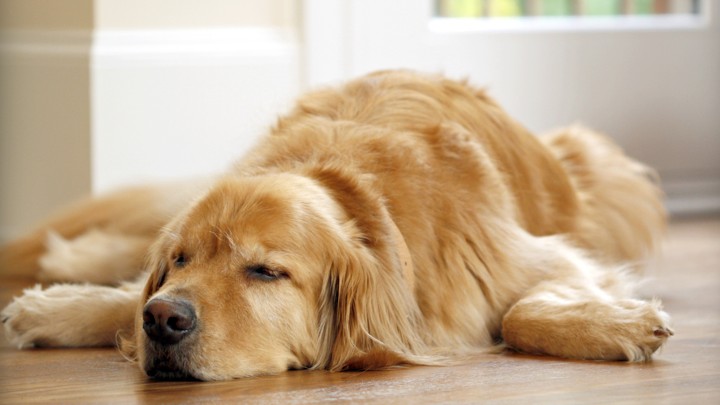Indoor Air Quality and Pets
- Details
By Gord Cooke - Mechanical Business Magazine
When I was a kid, our beloved black Lab, Rocky, lived in a smelly and dusty dwelling called a doghouse. He came indoors only on extremely cold nights and was never very comfortable in the house. I remember cats as being free ranging, perhaps settling into the garage or barn. But nowadays they, too, more commonly live indoors.
Add to this the menagerie of other pets available to households: birds, hamsters, snakes, mice, rabbits, ferrets, potbelly pigs and more. It should be no surprise, then, that these inhabitants add to the complexity of pollutants in a home.

Allergens and Odours
With respect to the indoor air quality challenges posed by pets, there are three main concerns: allergens, particulates and odours.Consider first the allergy potential. Some animals produce allergens that will affect some people, and in rare cases affect other animals.
Cat dander is so fine that it can float in the air for days before being inhaled and drawn deep into the respiratory system of people with allergies. The dander particulates are "sticky," so when they do settle on walls, furniture, furnishings or clothing they are hard to clean off and can stay active as an allergen for long periods of time.
While allergens are the most important concern in households where someone suffers from allergies, the added dust load from pets affects all households. The hair, the debris from feathers, dandruff, dander, dirt, food bits and litter are a challenge to maintaining good air quality.
These particulates are also a food source for dust mites and other critters that produce their own smaller particulates. Dust mite droppings are themselves very fine, stay in the air for long periods of time, readily enter the respiratory system and are a known allergen.
Another concern is odours: the gases from body odour, respiration, droppings and bedding that add to the total chemical load in the air.
The human nose acclimatizes quickly to smells, so much so that your clients may not be fully aware of the odours in their own homes. It may be up to you to delicately broach this subject with them.
Four Key Strategies
- Remove
A central vacuum system, vented outdoors, is also a powerful way of minimizing fine dust particles when cleaning floors. The dander from cats is so fine that it passes through normal vacuum system filters and gets re-entrained into the air stream, making things worse.
Clients should be advised to use either a HEPA grade vacuum that can trap particles smaller than 2.5 microns, or to use a CV system that sends dust particles straight to the outside.
- Isolate or Seal
First, pets should have their own sleeping area or room. Keep that area isolated as much as possible by air-sealing walls and penetrations between the house and that area. Block off any return ducts from that area and keep it under a negative pressure with an exhaust fan or exhaust outlet from an HRV or ERV.
Litter boxes and other pet accessories should be away from the mechanical room and, where practical, isolated from living areas as well. One client I worked with had the cat litter box in a cabinet with a pet door and then installed a small exhaust fan to keep the cabinet under negative pressure.
For allergy sufferers, ensure their bedroom is air sealed from the main house and then supply the room with clean fresh air. The best choice is a supply duct from an energy recovery ventilator that has passed through a HEPA filter. Even 20 to 30 CFM of clean air can do wonders for a good night’s sleep.
- Ventilate
Ventilation rates for homes are determined by occupant loads at approximately 15 CFM per person. The addition of pets should trigger added ventilation for these added occupants. When designing facilities for animals, the design ventilation rate is 30 to 40 CFM per cat and 15 to 25 CFM per dog.
Install and operate an HRV or ERV with a capacity equal to the number of human occupants plus dogs times 15 CFM plus cats times 30 CFM. This will help control odours and dust loads for all occupants.
- Filter
However, you will want to be careful about setting unreasonable expectations. It is highly unlikely that homeowners can filter their way out of a cat allergy problem. Most dust in houses is on the floor or sticking to walls and furniture. This dust is re-entrained into the air by occupant activities and it is unlikely that dust will be filtered through the return air system of the furnace before it gets to the personal breathing zone of the occupants.
By all means, recommend quality filters that can take out particle sizes less than 2.5 microns. Be sure to measure the static pressure across the filter to ensure it isn’t inappropriately affecting airflow delivery. Couple the filter recommendation with an ECM motor on the air handler to allow for continuous fan operation with quiet, low-energy operation.
Remember, the dust load in homes with pets is higher, so the filters will have to be replaced more often. Put your clients on a filter replacement program, but be cautious about setting expectations for the results of a filter change. It is unlikely to reduce the amount of visible dust on flat surfaces or even in the air, or to alleviate allergy symptoms on its own.
Original Article: Mechanical Business: https://mechanicalbusiness.com/iaq-and-pets/
For more information on this topic and others, please contact our office: